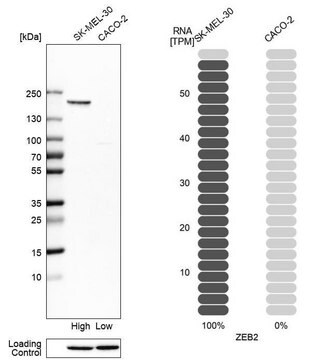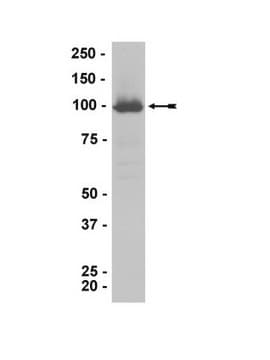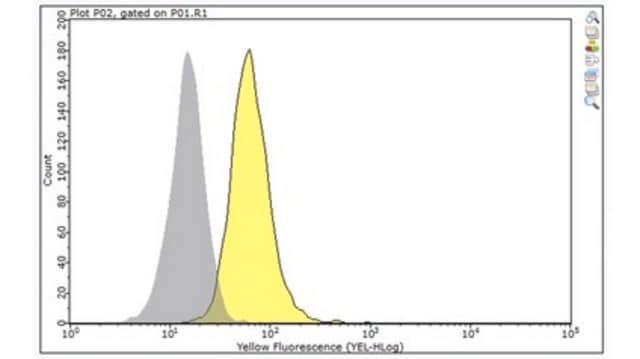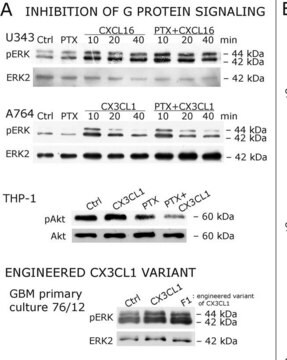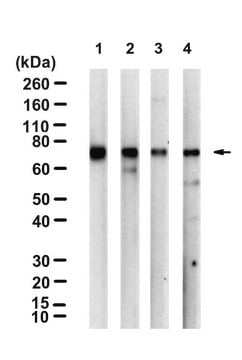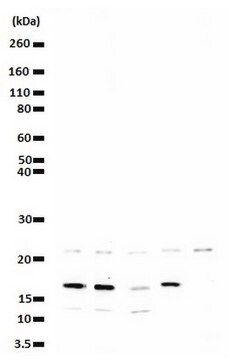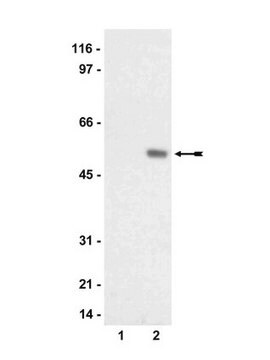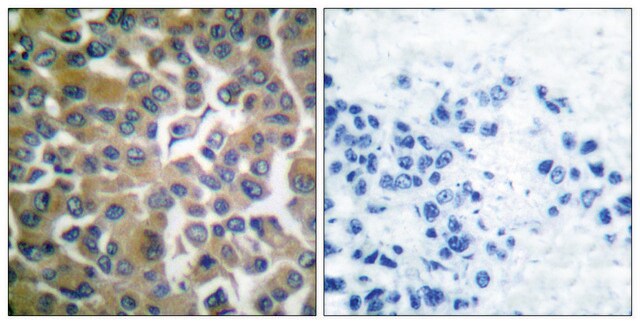07-641
Anti-MAP2K1/MEK1 Antibody
Upstate, rabbit polyclonal
Sinónimos:
Anti-CFC3, Anti-MAPKK1, Anti-MEK1, Anti-MEL, Anti-MKK1, Anti-PRKMK1
Seleccione un Tamaño
461,00 €
Seleccione un Tamaño
About This Item
461,00 €
Productos recomendados
Nombre del producto
Anti-MEK1 Antibody, Upstate®, from rabbit
origen biológico
rabbit
Nivel de calidad
forma del anticuerpo
purified immunoglobulin
tipo de anticuerpo
primary antibodies
clon
polyclonal
reactividad de especies
mouse, rat, human
fabricante / nombre comercial
Upstate®
técnicas
immunoprecipitation (IP): suitable
western blot: suitable
isotipo
IgG
Nº de acceso NCBI
Nº de acceso UniProt
Condiciones de envío
dry ice
modificación del objetivo postraduccional
unmodified
Información sobre el gen
human ... MAP2K1(5604)
Especificidad
Inmunógeno
Aplicación
Signaling
MAP Kinases
Calidad
Descripción de destino
Ligadura / enlace
Forma física
Almacenamiento y estabilidad
Nota de análisis
Positive Antigen Control: Catalog #12-301, non-stimulated A431 cell lysate. Add 2.5µL of 2-mercaptoethanol/100µL of lysate and boil for 5 minutes to reduce the preparation. Load 20µg of reduced lysate per lane for mingels.
Información legal
Cláusula de descargo de responsabilidad
¿No encuentra el producto adecuado?
Pruebe nuestro Herramienta de selección de productos.
Código de clase de almacenamiento
10 - Combustible liquids
Clase de riesgo para el agua (WGK)
WGK 1
Certificados de análisis (COA)
Busque Certificados de análisis (COA) introduciendo el número de lote del producto. Los números de lote se encuentran en la etiqueta del producto después de las palabras «Lot» o «Batch»
¿Ya tiene este producto?
Encuentre la documentación para los productos que ha comprado recientemente en la Biblioteca de documentos.
Filtros activos
Nuestro equipo de científicos tiene experiencia en todas las áreas de investigación: Ciencias de la vida, Ciencia de los materiales, Síntesis química, Cromatografía, Analítica y muchas otras.
Póngase en contacto con el Servicio técnico